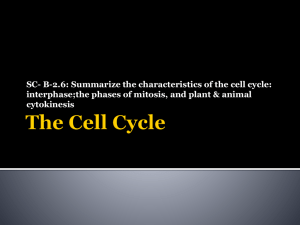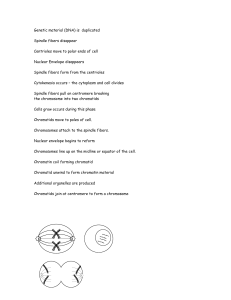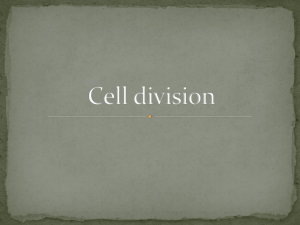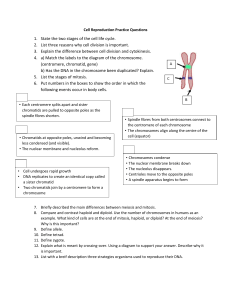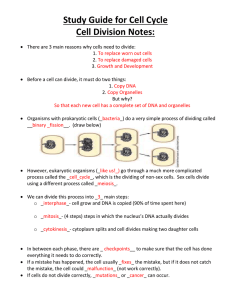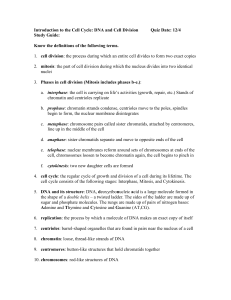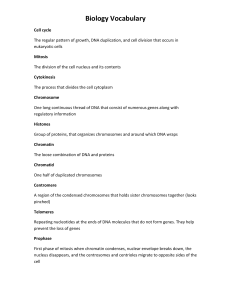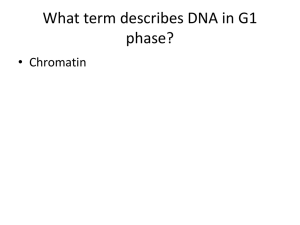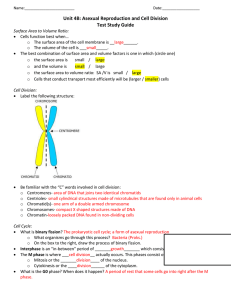Biology 10.1 & 10.2 Review Worksheet: Cell Division & Cycle
advertisement
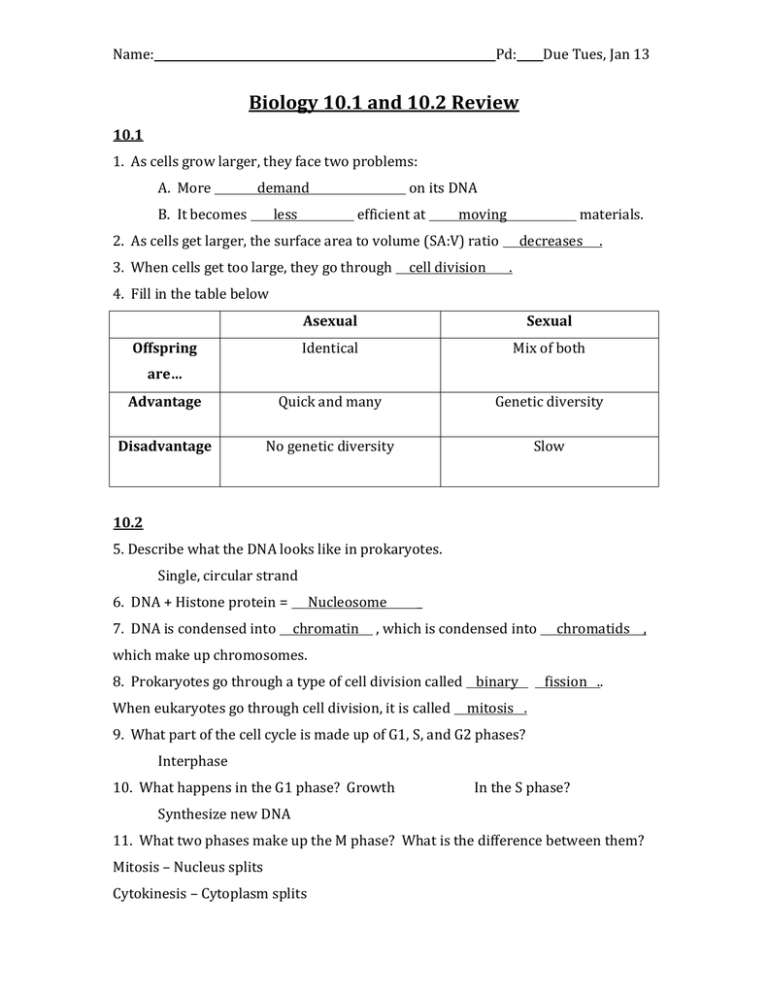
Name: Pd: Due Tues, Jan 13 Biology 10.1 and 10.2 Review 10.1 1. As cells grow larger, they face two problems: A. More demand B. It becomes less on its DNA efficient at moving materials. 2. As cells get larger, the surface area to volume (SA:V) ratio 3. When cells get too large, they go through cell division decreases . . 4. Fill in the table below Asexual Sexual Identical Mix of both Advantage Quick and many Genetic diversity Disadvantage No genetic diversity Slow Offspring are… 10.2 5. Describe what the DNA looks like in prokaryotes. Single, circular strand 6. DNA + Histone protein = 7. DNA is condensed into Nucleosome chromatin _ , which is condensed into chromatids , which make up chromosomes. 8. Prokaryotes go through a type of cell division called binary When eukaryotes go through cell division, it is called fission .. mitosis . 9. What part of the cell cycle is made up of G1, S, and G2 phases? Interphase 10. What happens in the G1 phase? Growth In the S phase? Synthesize new DNA 11. What two phases make up the M phase? What is the difference between them? Mitosis – Nucleus splits Cytokinesis – Cytoplasm splits Name: Pd: Due Tues, Jan 13 12. How are the chromatids and centromere related? Centromere connects the chromatids 13. How are centrioles and the spindle related? Centrioles organize the spindle 14. List the four phases of mitosis in order. Tell me one thing that happens during each phase, and draw a picture of the phase as well. Phase and picture 1. Prophase - chromosomes condense and becomes visible. Centrioles move to opposite sides of nucleu The nucleolus disappears and nuclear envelope breaks down 2. Metaphase - centromeres line up across the center. A spindle fiber from each pole connects to the centromere. 3. Anaphase - centromeres are pulled apart and each chromatid becomes a separate chromosome. The chromosomes move towards the poles. 4. Telophase - chromosomes unwind into chromatin. Nuclear envelope re-forms around chromosomes. Spindle breaks apart, and the nucleolus becomes visible in each daughter nucleus. Description


